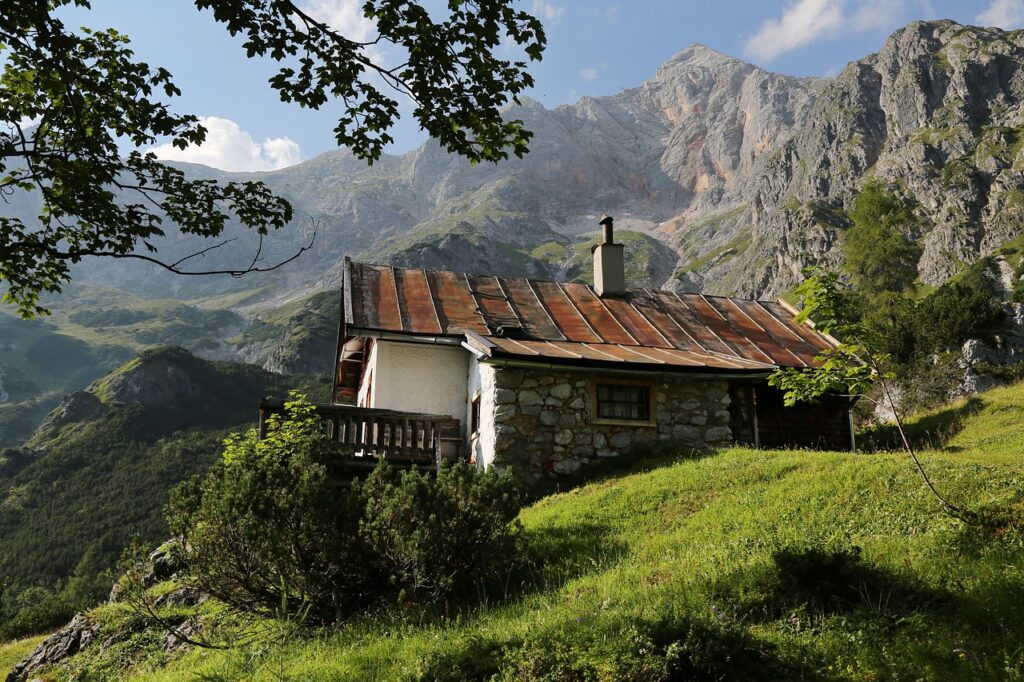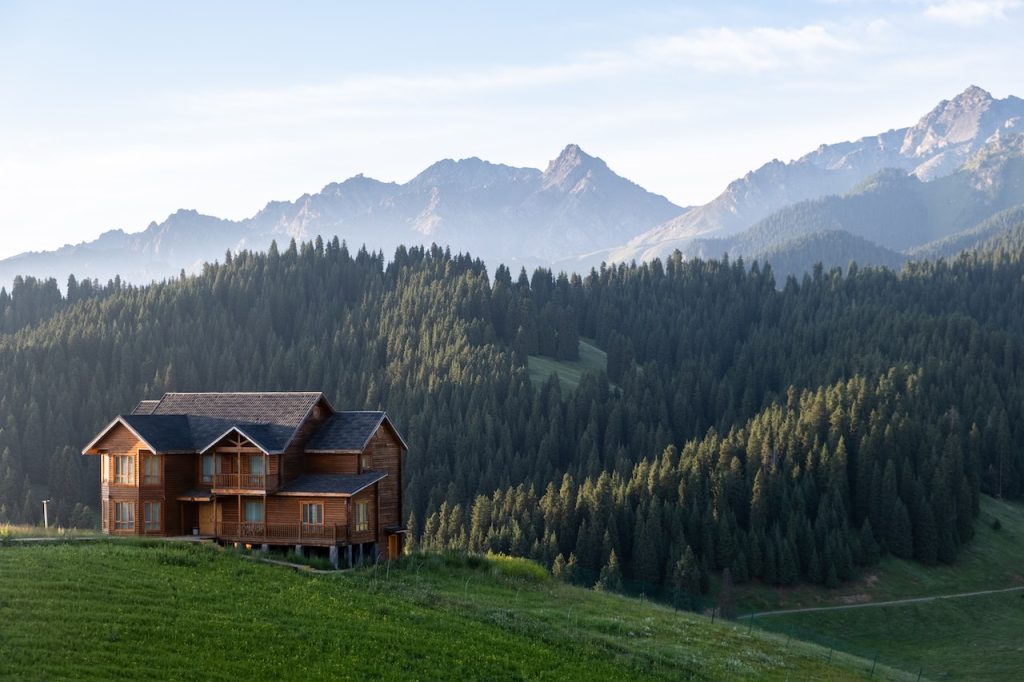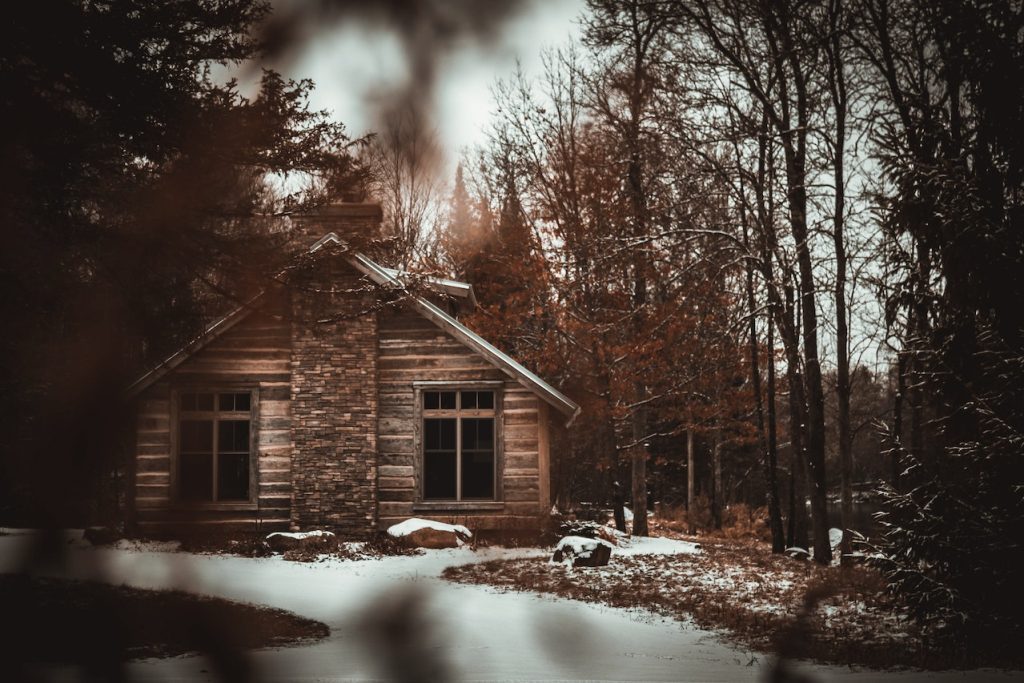Have you ever considered what it’d feel like to disconnect from the bustling hive of the grid? The enthralling allure of self-sufficiency, where city hums become whispers of winds and nights are lit up by stars instead of street lights. Ah, off-grid living, you bewitching siren! But hold your horses, dreamer. Jumping ship to a grid-less life is more than just romancing the wilderness. It’s a calculated journey into autonomy, and it’s vital to know what you’re diving into. Ever wondered, “What exactly would I need to live off the grid?” Let’s unravel that tapestry, step by detailed step.
Understanding the Basics: Why Off-grid?
What does “off-grid” really mean? To the uninitiated, it sounds quite rogue, perhaps even reckless. But is it really just about escaping the hustle and bustle? Off-grid living is a conscious step towards:
- Sustainability: Leaving behind a smaller carbon footprint.
- Self-sufficiency: Growing what you eat and using renewable energy sources.
- Reconnecting with nature: Understanding and respecting Mother Earth’s rhythms.
Now, to the nitty-gritty. What are the staples of off-grid living?
Harnessing the Power of the Sun and Wind
It’s a grand thing to think about, isn’t it? Being powered by the sheer will of the sun and the dance of the winds. Harnessing natural energy is at the crux of off-grid living. But what lies behind this poetic imagery? It’s a seamless blend of technology, understanding your energy needs, and working harmoniously with Mother Nature’s cues. So, let’s dive deeper into this electric realm!
A. Solar Energy: The Sunlit Path to Independence
When one thinks of living off-grid, the iconic solar panel often springs to mind. But why all the fuss?
- Solar Photovoltaic (PV) Panels: These are the most popular means to convert sunlight directly into electricity. They’re panels often seen on rooftops, silently gathering the sun’s energy.
- Calculating Needs: It all starts with knowing your household’s energy consumption. Ever pondered how many kilowatt-hours you utilize in a day? By understanding this, you can decide the number and capacity of panels required.
- Location, Location, Location: Placing these panels matters. North-facing in the southern hemisphere and south-facing in the northern hemisphere usually yields the best results.
- Maintenance: They’re relatively low maintenance, but periodic cleaning and checking for obstructions ensures optimum performance. Remember, a dusty or snow-covered panel is like a sunbather with an umbrella!
B. Wind Energy: Waltzing with the Winds
While the sun is a formidable ally, the wind too has tales to tell and energy to share.
- Wind Turbines: These convert the kinetic energy of the wind into electrical power.
- Consistency Matters: Locations with steady, strong winds are ideal. It’s not just about gusts and gales, but the rhythmic dance of the winds that powers these turbines.
- Size and Scale: From small household turbines to larger scale versions, there’s a range to pick from depending on your energy needs.
- Maintenance: While sturdy, these giants need periodic inspections. The wear and tear from their ceaseless dance with the wind means parts might need replacement or tightening.
C. Storage: The Unsung Hero
While the sun and wind are reliable, they aren’t always constant. This is where storage systems come into play.
- Battery Systems: Think of them as your energy vaults, storing excess energy produced during sunny or windy periods for use during cloudy days or still nights.
- Types: Lead acid and lithium-ion batteries are popular choices. The latter, though more expensive, boasts of longer lifespan and efficiency.
- Capacity: Like a reservoir, the size matters. Based on your daily consumption and expected days of autonomy (days you expect to rely on stored energy), you choose your battery bank’s capacity.
Ever pondered about that fleeting moment when the sun kisses the horizon goodbye, and the winds are yet to pick up their nocturnal melody? That’s when your stored energy steps in, ensuring your off-grid dream is uninterrupted.
In essence, the journey to harnessing the power of the sun and wind is an intricate dance – a blend of technological prowess and respect for nature’s rhythms. And as the world pivots towards sustainability, isn’t it poetic justice that our primeval ancestors, the sun and wind, lead the charge?
Quenching the Thirst: Water Systems for the Off-grid Dweller
Ah, water, the very elixir of life. It’s one thing to marvel at the flicker of stars in a pristine off-grid night sky, but what’s a stargazer to do when parched? With no city pipelines at your disposal, how does an off-grid dweller ensure that the tap doesn’t run dry? Allow me to navigate you through the rivulets and streams of off-grid water systems.
A. Rainwater Harvesting: Nature’s Generosity
As the heavens open up and bestow their bounty upon us, capturing and conserving rainwater is one of the most efficient ways to sustain an off-grid life.
- Catchment Systems: This usually involves rooftops fitted with gutters that guide rainwater into storage tanks.
- Material Matters: Ever thought about what your roof is made of? Some materials are more suitable than others for potable water collection.
- First Flush Diverter: It diverts the initial flow of rainwater which might contain impurities. Think of it as letting the teapot brew a bit before your first cup.
- Storage Tanks: Size is pivotal! How much rain does your area receive? How long are the dry spells? These factors determine your tank’s capacity.
B. Groundwater: Tapping into Earth’s Hidden Reservoirs
When rainwater proves elusive, perhaps it’s time to delve deeper.
- Wells: A classic method, digging or drilling to access underground water sources.
- Location is Key: Not all ground holds water. It’s like searching for buried treasure, so preliminary assessments like ground surveys are essential.
- Pumps: Manual or powered, these help in drawing water up. Solar-powered pumps have gained popularity among off-gridders for their efficiency and eco-friendliness.
C. Streams, Rivers, and Lakes: The Age-old Sustainers
For those fortunate enough to find their off-grid haven near a natural water source, the solution is right at your doorstep.
- Direct Collection: Using buckets or pipes, this method is as old as time.
- Ram Pumps: These fascinating devices use the power of flowing water to pump a portion of it uphill without electricity. A miracle of physics!
D. Purification: The Guardian at the Gate
Just because water looks pristine doesn’t mean it’s safe to gulp down.
- Filters: From ceramic to charcoal, various filters sift out contaminants.
- Boiling: The age-old method to kill pathogens. Ever noticed how a rolling boil feels like nature’s applause?
- Chemical Purification: Chlorine or iodine tablets can be used, especially if you’re on the move.
E. Water Heaters: Warmth from the Wilderness
Cold nights and warm showers are a match made in heaven.
- Solar Water Heaters: These devices use the sun’s energy to heat water. Simple and efficient.
- Wood-burning Heaters: For those deep in the woods, a wood-fired heater adds a rustic charm to your off-grid abode.
In the end, isn’t water the very poetry of survival? It flows, quenches, cleanses, and sustains. While off-grid living might pull you away from many urban amenities, with the right systems in place, water will never be a missed luxury. The quest is not just about quenching one’s thirst but tapping into the very pulse of life, one drop at a time.
Building Shelter: Homes that Embrace Nature
Ah, the ancient human need for shelter. From the dawn of time, it’s been about more than just bricks and beams; it’s the canvas of our stories, the framework of our daily lives. In the realm of off-grid living, constructing a home is not just a structural endeavor but a lyrical embrace of the environment. How so? Let’s construct this understanding, layer by layer.
A. Natural Materials: Echoes of the Earth
In the off-grid world, there’s a profound respect for nature, and what better way to honor it than to use what it generously offers?
- Straw Bales: An intriguing blend of tradition and innovation. These bales, once bound tightly and plastered, offer robust insulation.
- Did you know? A straw bale home can keep you cool during summer’s caress and warm when winter waltzes in.
- Cob: A mix of clay, sand, straw, and water. It’s the ancient answer to sustainable building.
- Fun Fact: Cob houses have stood for centuries. They’re like nature’s version of the fairy tale brick house!
- Timber: Harvested responsibly, wood offers a versatile building medium, merging strength with timeless beauty.
B. Designing with Purpose: Where Function Meets Philosophy
Off-grid homes are more than their constituent materials. Their design is a hymn sung in harmony with the land.
- Passive Solar Designs: By strategically placing windows and using thermal mass (like stone or concrete floors), these homes trap the sun’s warmth during the day and release it at night.
- Green Roofs: These are roofs covered with vegetation. They not only insulate but also blend the home into the natural landscape. Imagine your rooftop bursting into a riot of colors with each changing season!
- Maximizing Natural Light: Skylights and large windows ensure that during the day, artificial lighting becomes largely redundant.
C. Mobility and Minimalism: Less Can Be More
With the surge in minimalistic living, some off-gridders are thinking inside the box, quite literally!
- Tiny Homes: Compact, yet brimming with all essentials. These homes challenge the very definition of space, proving that size doesn’t always dictate function.
- Renovated Buses or Vans: Once vessels of commute, now transformed into homes. They offer the thrill of mobility with the comforts of a cozy abode.
- Yurts: Drawing inspiration from Central Asia, these circular tents are not only spacious but also surprisingly sturdy.
D. Insulation and Ventilation: The Breath and Coat of a Home
A house’s soul lies in its ability to breathe and protect.
- Natural Insulation: Materials like sheep’s wool, hemp, or even recycled cotton denim provide warmth.
- Effective Ventilation: Ensuring a home breathes is essential to avoid mold and maintain air quality. Features like clerestory windows or ridge vents can work wonders.
In the grand tapestry of life, building an off-grid home isn’t just about shelter. It’s a testament to resilience, a celebration of autonomy, and above all, a profound communion with nature. So, when you lay down the first brick or timber beam of your off-grid abode, remember, you’re not just building a house, you’re crafting a sanctuary. And isn’t that what every soul yearns for – a place where walls resonate with stories and roofs echo with dreams?
Feeding the Belly: Sustainable Agriculture and Hunting
Ah, the simple joys of a meal. But in the off-grid universe, it’s not just about what’s on the plate, it’s about the story behind every morsel. From the gentle touch of the sun on a ripening fruit to the age-old dance of predator and prey, feeding oneself becomes a poetic ode to the land and its rhythms. Ready to savor this narrative?
A. Sustainable Agriculture: Nurturing Nature’s Larder
To plant a seed and watch it sprout is to witness a miracle. Sustainable agriculture seeks not just to harness this miracle but to enhance and prolong it.
- Permaculture: It’s not just farming, it’s a philosophy. A commitment to work ‘with’ rather than ‘against’ nature.
- Food Forests: Layered, multi-tiered gardens that mimic natural forests. Imagine plucking fruits from trees, while shrubs offer berries, and roots below store tubers. Doesn’t that sound like Eden revisited?
- Crop Rotation: By planting different crops in a sequence, the soil remains fertile, and pests are kept at bay.
- Composting: Nature’s recycling program! It returns nutrients back to the soil, completing the circle of life.
- Worm Farms: These wriggly creatures help break down organic matter, producing a rich and fertile compost.
B. Hunting and Foraging: Echoes of Ancestral Instincts
Before supermarkets and grocery lists, there was the land and its wild offerings. Hunting and foraging are as old as humanity itself.
- Ethical Hunting: It’s not about the thrill, but the sustenance. Taking only what’s needed and ensuring populations remain stable.
- Local Knowledge: Understanding the animals in your area, their habits, and their breeding seasons is paramount.
- Use Every Part: From meat and hide to bones, an ethical hunter utilizes every part of the animal, minimizing waste and honoring its life.
- Foraging: The art of identifying edible wild plants.
- Safety First: Not every berry is a treat, some can be deadly! Thus, understanding local flora and having guidebooks or experts on hand is essential.
- Seasonal Treasures: From wild berries in summer to mushrooms in the fall, every season has its unique bounty.
C. Preservation: Nature’s Clock Paused
In the absence of 24/7 supermarkets, preserving food becomes an art and a science.
- Canning: Fruits, vegetables, or meats are stored in jars, sealed, and heated to kill contaminants.
- Pickling: Immersing food in vinegar or brine. It’s not just about cucumbers; think pickled onions or even fish!
- Dehydration: Removing moisture to ensure a longer shelf life. Sun-dried tomatoes or beef jerky, anyone?
- Cold Storage: Root cellars or underground storage use the earth’s cooler temperature to keep produce fresh.
In the mosaic of off-grid life, feeding the belly is a vibrant and vital tile. It’s more than just nutrition; it’s a lesson in gratitude, a meditation on patience, and a dance with the earth’s rhythms. And at the end of the day, as the hearth warms your off-grid abode and the aroma of a freshly cooked meal fills the air, you’re reminded that food isn’t just sustenance. It’s a story, a legacy, an emotion. And what’s more human than finding joy in the simple act of eating, especially when the earth herself is the chef?
Waste Not: Sanitation and Waste Management
Living off-grid doesn’t mean leaving behind responsibility.
- Composting toilets: Turning waste into valuable compost.
- Recycle and repurpose: Reduce the need for new goods.
- Biogas units: Transforming organic waste into energy.
Keeping in Touch: Communication Systems
Just because you’re off-grid doesn’t mean you’re off the map!
- Satellite phones: For those remote locations.
- Radio communication: Keeping in touch with nearby communities.
- Internet: Satellite or wireless options can keep you connected.
Who said off-grid means losing touch with the world?
Additional Essential Tips and Hacks
- Learn basic first aid and survival skills.
- Keep a well-stocked emergency kit.
- Engage with local off-grid communities for support and advice.
Key Takeaway
Off-grid living is not just a change of address; it’s a lifestyle transformation. From food to shelter, water to waste, every aspect requires forethought. The road might be riddled with challenges, but the rewards? Priceless. It’s freedom, sustainability, and a connection with nature that’s unparalleled.
So, are you ready to take the off-grid plunge?
Remember, it’s not just about escaping the world, but truly connecting with it.



